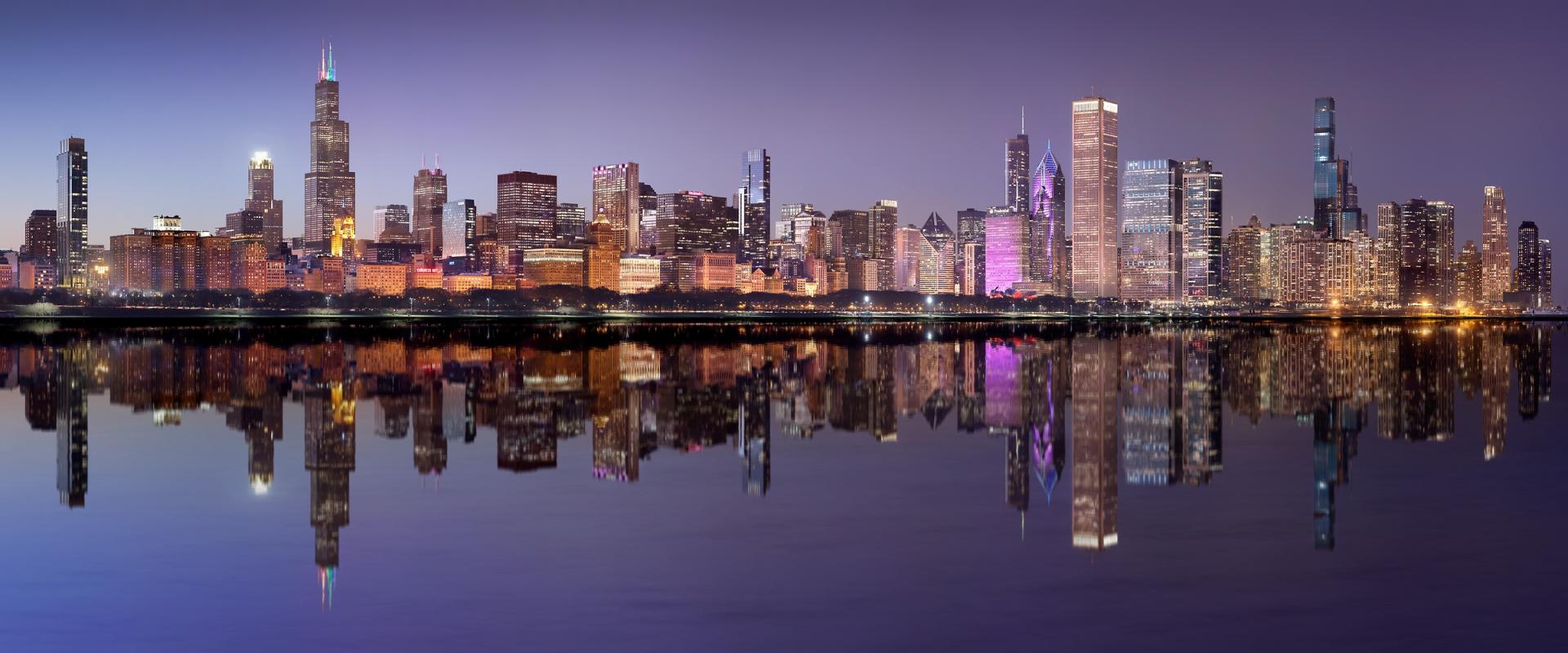Existing to 1833: Prior to European settlement, the area of present-day Chicago was inhabited by Native American tribes, including the Potawatomi. The region was characterized by its abundant wildlife, fertile land, and access to waterways, making it an attractive area for hunting, fishing, and trading.
1833: Chicago was officially incorporated as a town on March 4, 1833, with a population of around 200 people. The town quickly began to grow as a result of its strategic location on Lake Michigan and the opening of the Erie Canal, which connected the Great Lakes to the Atlantic Ocean.
1837: On March 4, 1837, Chicago was granted a city charter and officially became the City of Chicago. With the completion of the Illinois and Michigan Canal in 1848, Chicago became a bustling center for trade and transportation, as goods could now be shipped between the Great Lakes and the Mississippi River.
1848: The completion of the Illinois and Michigan Canal in 1848 was a significant milestone in Chicago's history. The canal connected Chicago to the Mississippi River, providing a crucial link between the Great Lakes and the Gulf of Mexico. This allowed Chicago to become a major transportation hub, facilitating the movement of goods and people across the Midwest.
1871: The Great Chicago Fire, which started on October 8, 1871, devastated much of the city, destroying thousands of buildings and leaving an estimated 100,000 people homeless. The fire burned for two days and consumed an area of about 3.3 square miles, including the central business district. Despite the widespread destruction, the fire also provided an opportunity for the city to rebuild and modernize its infrastructure.
1885: The construction of the Home Insurance Building in 1885 marked the birth of the modern skyscraper. Designed by architect William Le Baron Jenney, the ten-story building was the first to use a steel frame structure, allowing for greater height and stability. The Home Insurance Building stood at 138 feet tall and paved the way for the skyscrapers that would come to define Chicago's skyline.
1893: Chicago hosted the World's Columbian Exposition, also known as the Chicago World's Fair, from May 1 to October 30, 1893. The fair commemorated the 400th anniversary of Christopher Columbus' arrival in the Americas and showcased the latest advancements in technology, industry, and culture. The fair attracted over 27 million visitors and featured iconic attractions such as the Ferris Wheel and the White City.
Early 20th Century: The early 20th century saw continued growth and development in Chicago, fueled by industrialization, immigration, and urbanization. The city's population boomed as immigrants from Europe and African Americans from the South flocked to Chicago in search of economic opportunities. Neighborhoods like Pilsen, Chinatown, and Bronzeville emerged as vibrant ethnic enclaves, contributing to the city's rich cultural diversity.
1919: The Chicago Race Riot of 1919, also known as the Red Summer, erupted in July 1919 and lasted for nearly a week. The riot was sparked by racial tensions between white and black residents and was exacerbated by economic disparities, housing segregation, and competition for jobs. The violence resulted in widespread destruction and loss of life, with over 38 people killed and hundreds injured.
1920s: The 1920s, often referred to as the Roaring Twenties, was a period of economic prosperity and cultural flourishing in Chicago. The city experienced a boom in industry, commerce, and entertainment, fueled by innovations like the automobile, radio, and motion pictures. Chicago became known for its vibrant nightlife, jazz music, and speakeasies during the Prohibition era, attracting tourists and revelers from across the country.
1933-1934: The Century of Progress International Exposition was held in Chicago from May 27, 1933, to October 31, 1934. The world's fair celebrated technological advancements and innovations in science, industry, and culture, showcasing futuristic exhibits and pavilions. The fair attracted millions of visitors and left a lasting legacy on the city, contributing to Chicago's reputation as a hub of innovation and progress.
1950s-1960s: Chicago played a significant role in the Civil Rights Movement of the 1950s and 1960s, with activists like Martin Luther King Jr. leading marches, protests, and boycotts for racial equality. The city experienced racial segregation, discrimination, and social unrest, particularly in neighborhoods like Bronzeville and Lawndale. The Chicago Freedom Movement, led by King and local activists, campaigned for fair housing, employment opportunities, and an end to segregation in schools and public spaces.
Late 20th Century: The late 20th century saw significant changes and challenges for Chicago, including economic shifts, demographic changes, and urban renewal efforts. The city faced deindustrialization, suburbanization, and population loss in the latter half of the century, leading to the decline of traditional industries and neighborhoods. However, Chicago also experienced revitalization efforts in downtown areas and waterfronts, with the development of new cultural institutions, parks, and entertainment districts.
21st Century: In the 21st century, Chicago continued to be a dynamic and diverse city, grappling with a range of social, economic, and political issues. The city faced challenges related to crime, education, infrastructure, and affordable housing, as well as ongoing efforts to promote economic development, innovation, and sustainability. Chicago remained a cultural and economic powerhouse, attracting residents, businesses, and visitors from around the world.
This expanded timeline provides a more detailed overview of key events and developments in the history of Chicago, highlighting the city's evolution from its early days to the present day.
